"Combined, the top five most prolific publishers account for more than 50% of all papers published in 2013." - Larivière, Haustein, & Mongeon [1]
—
"A 2005 Deutsche Bank report referred to it as a “bizarre” “triple-pay” system, in which “the state funds most research, pays the salaries of most of those checking the quality of research, and then buys most of the published product.” - Buranyi [2]
The average subscription cost for access to eight journals at UK universities in 2016 was £2.7 million.[3]
I only questioned how academic publishing worked when... an editor of a prominent journal in my field rejected my research, not because of flawed methods or unsubstantiated claims but because it challenged their view of the academic system.
This unethical decision led me to spend years uncovering surprising details about:
- The academic publishing model,
- Why it exists as it does, and
- How it could be different.
I hope you'll find this series on academic publishing informative and thought-provoking!
Academic publishing as an extractive business model
The basics of business taught by a chemist 😅
I am a chemist. This means I have spent the majority of my adult life studying chemistry in school systems that don’t teach about economics or business models.
🧐 pondering for a moment whether this might be purposeful...If you have expertise here, please critique my explanation, but this is what I understand about how a business model works:
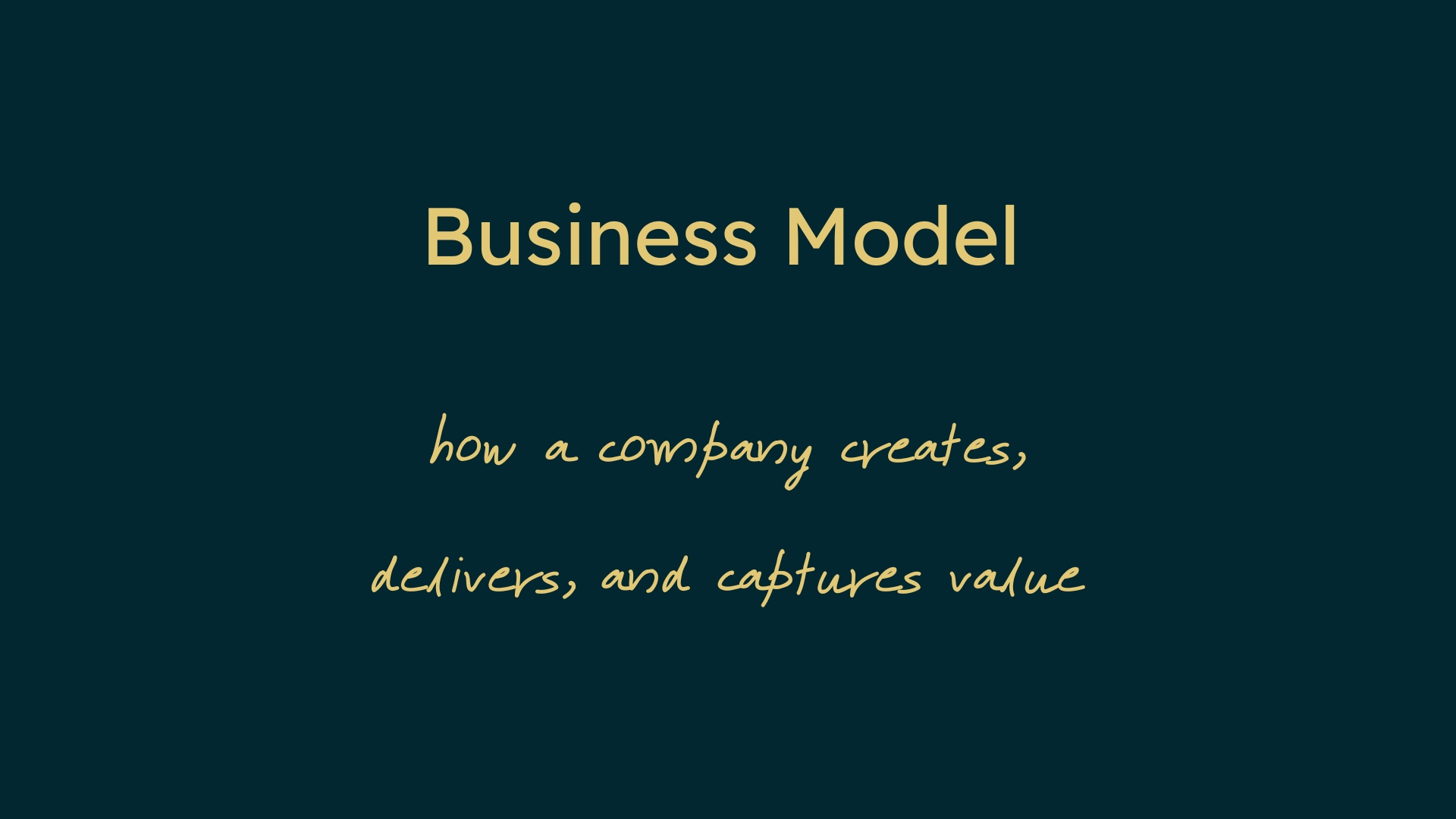
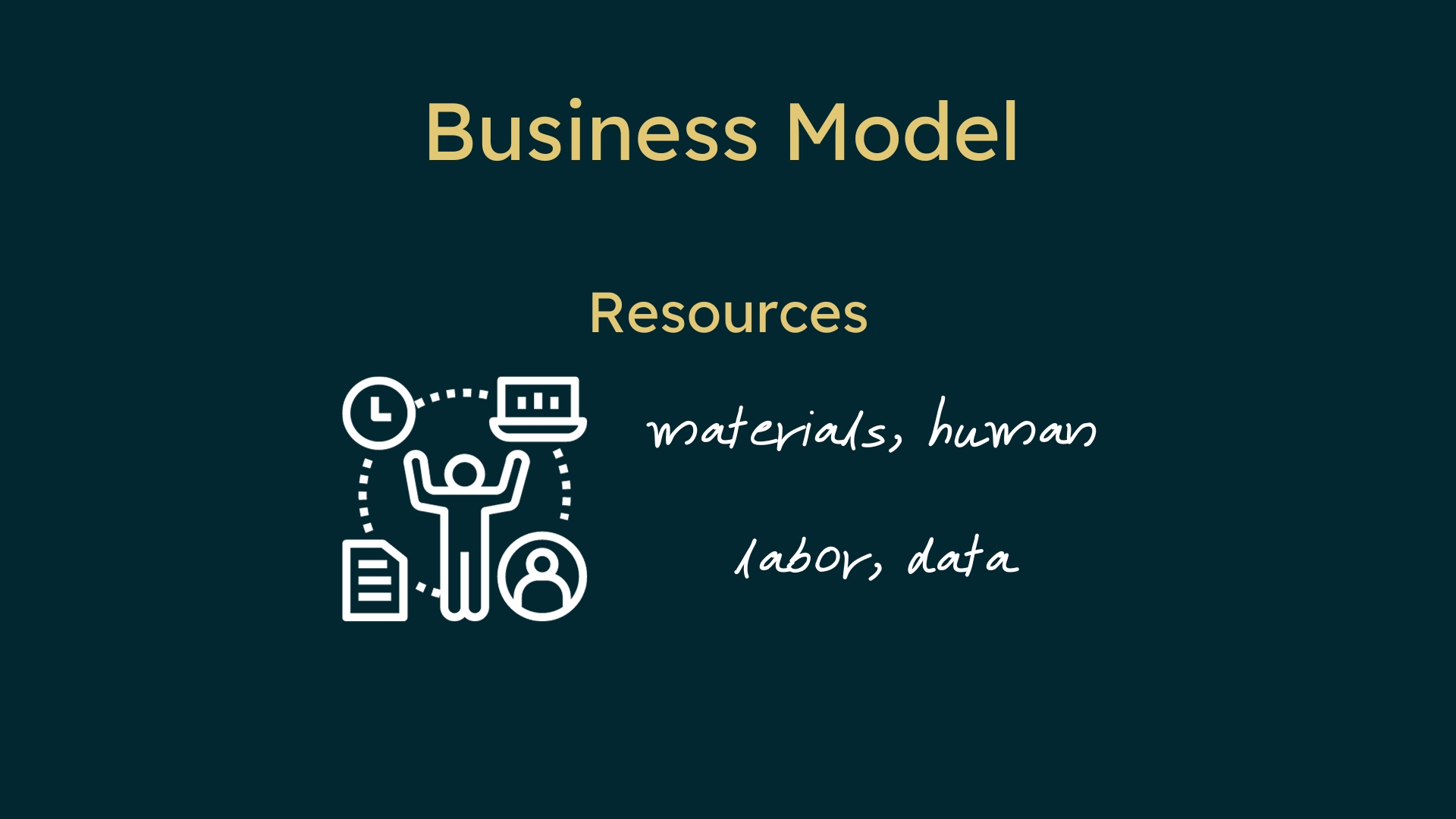
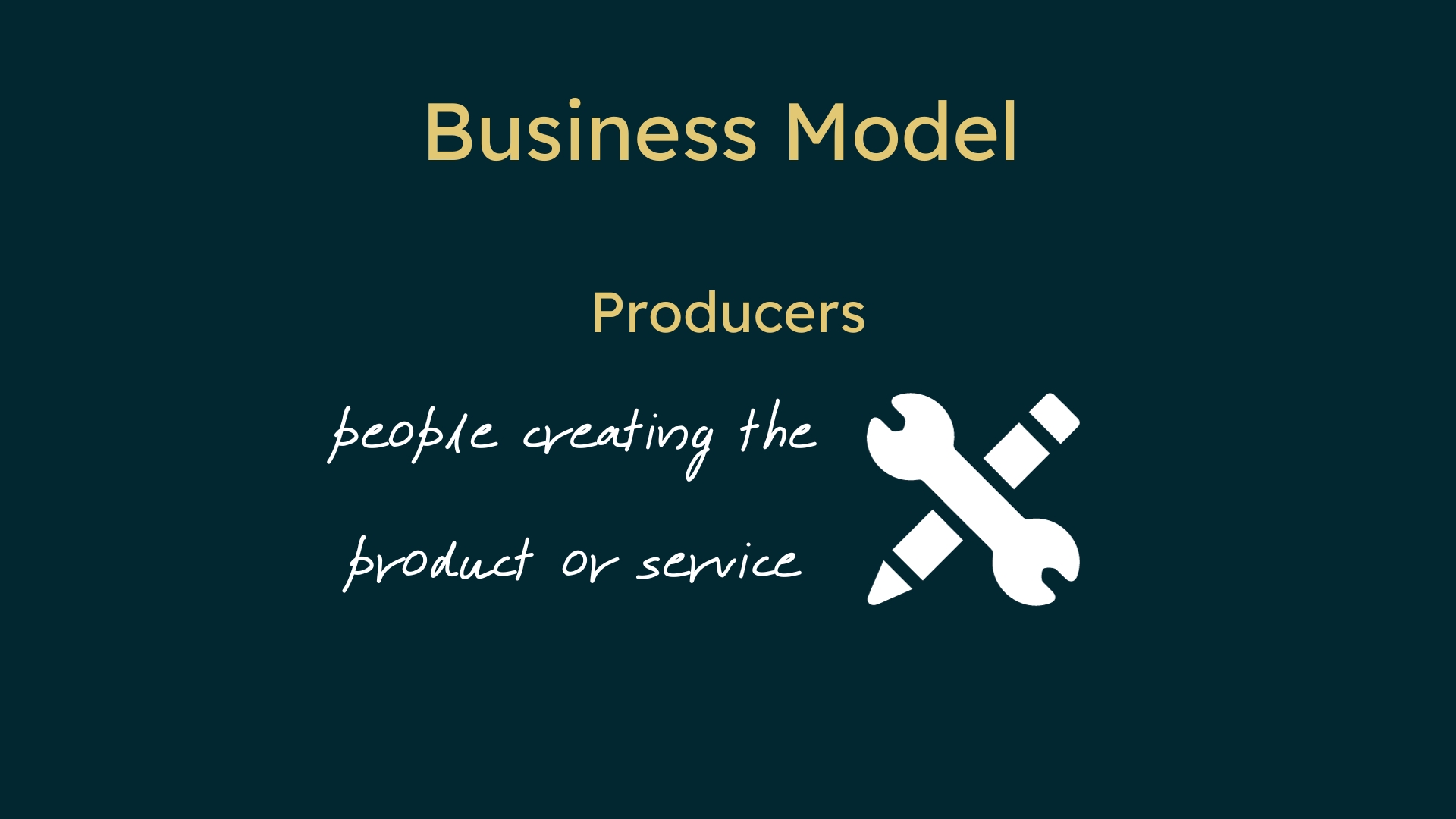
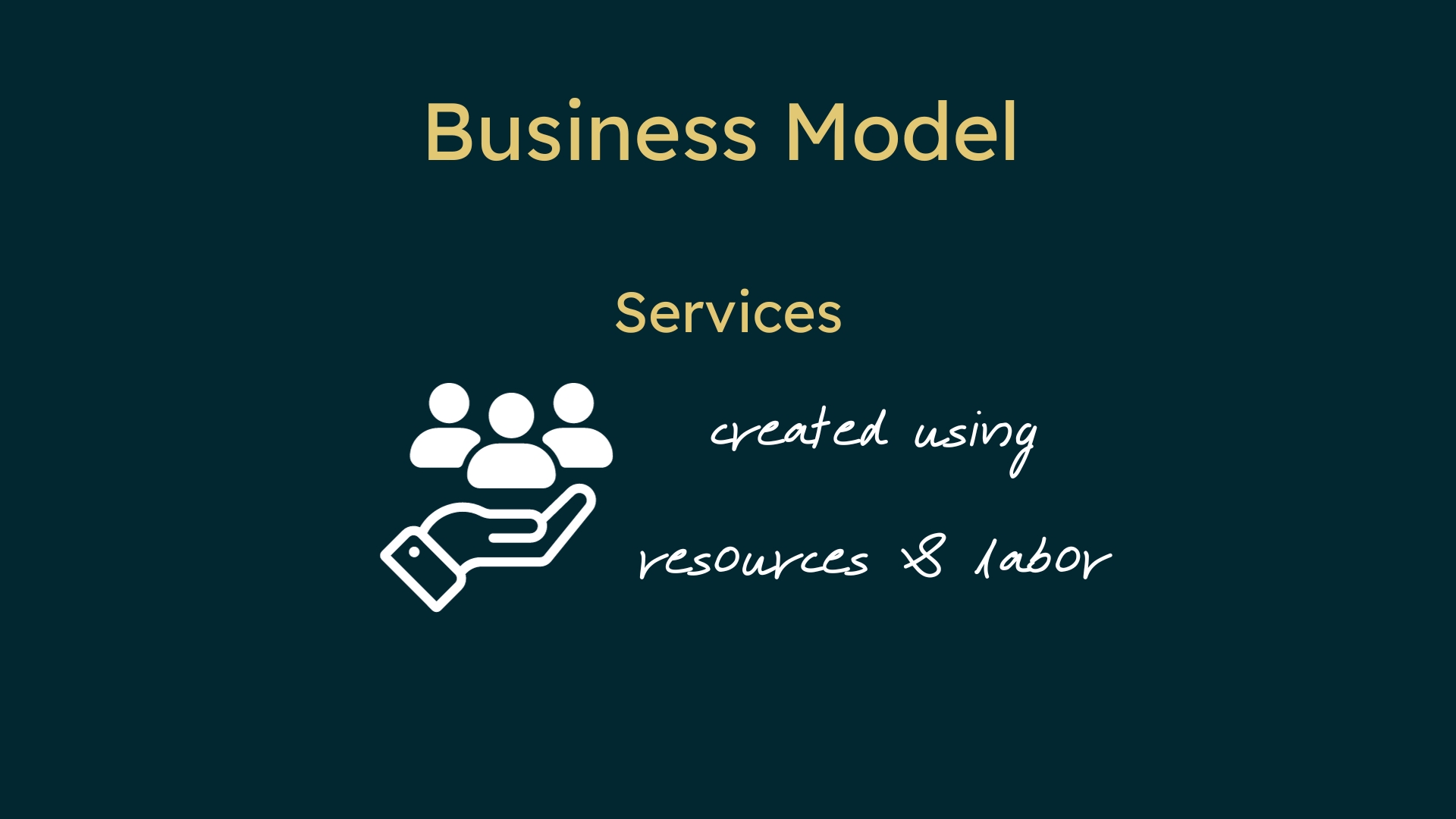
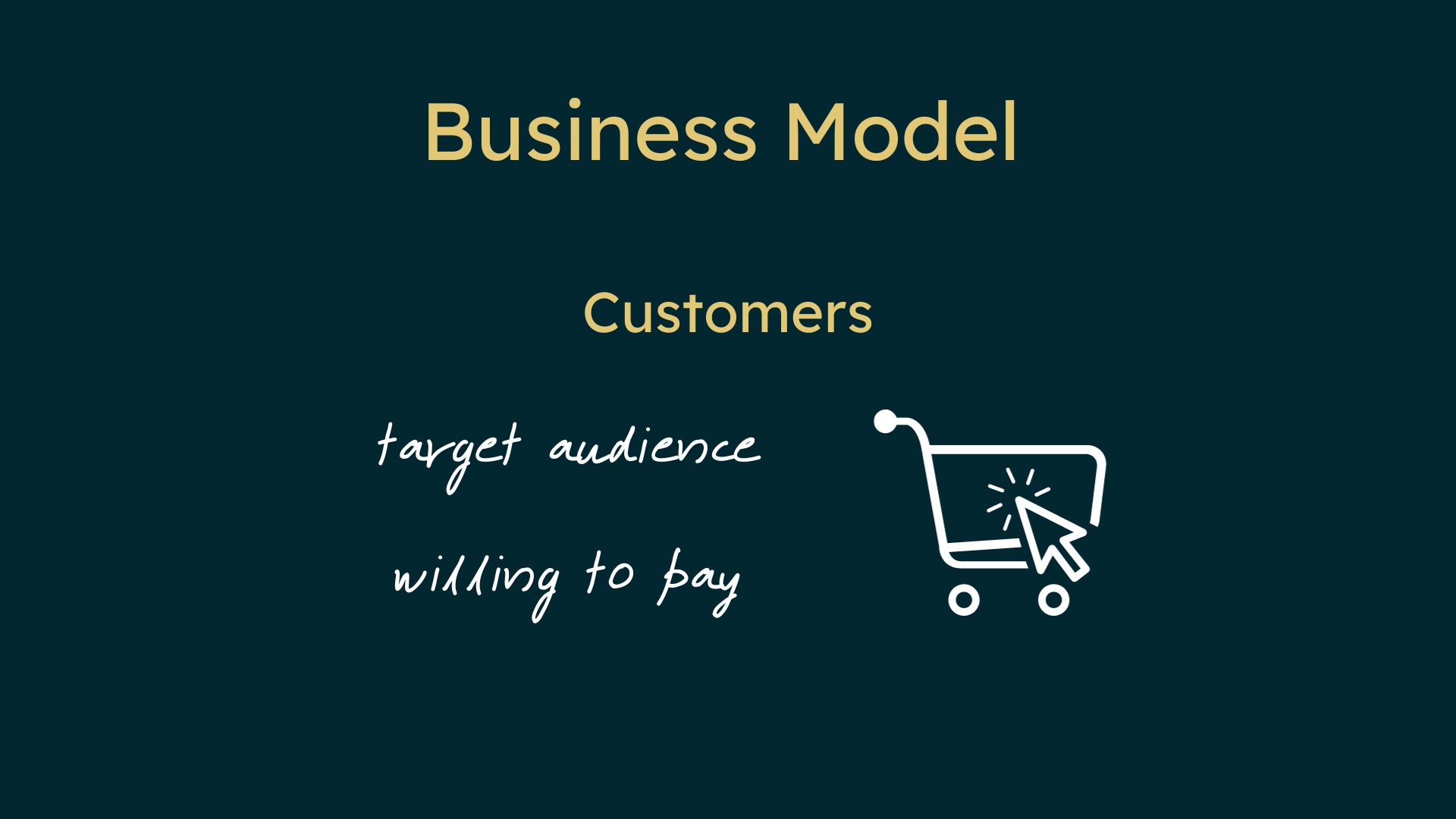
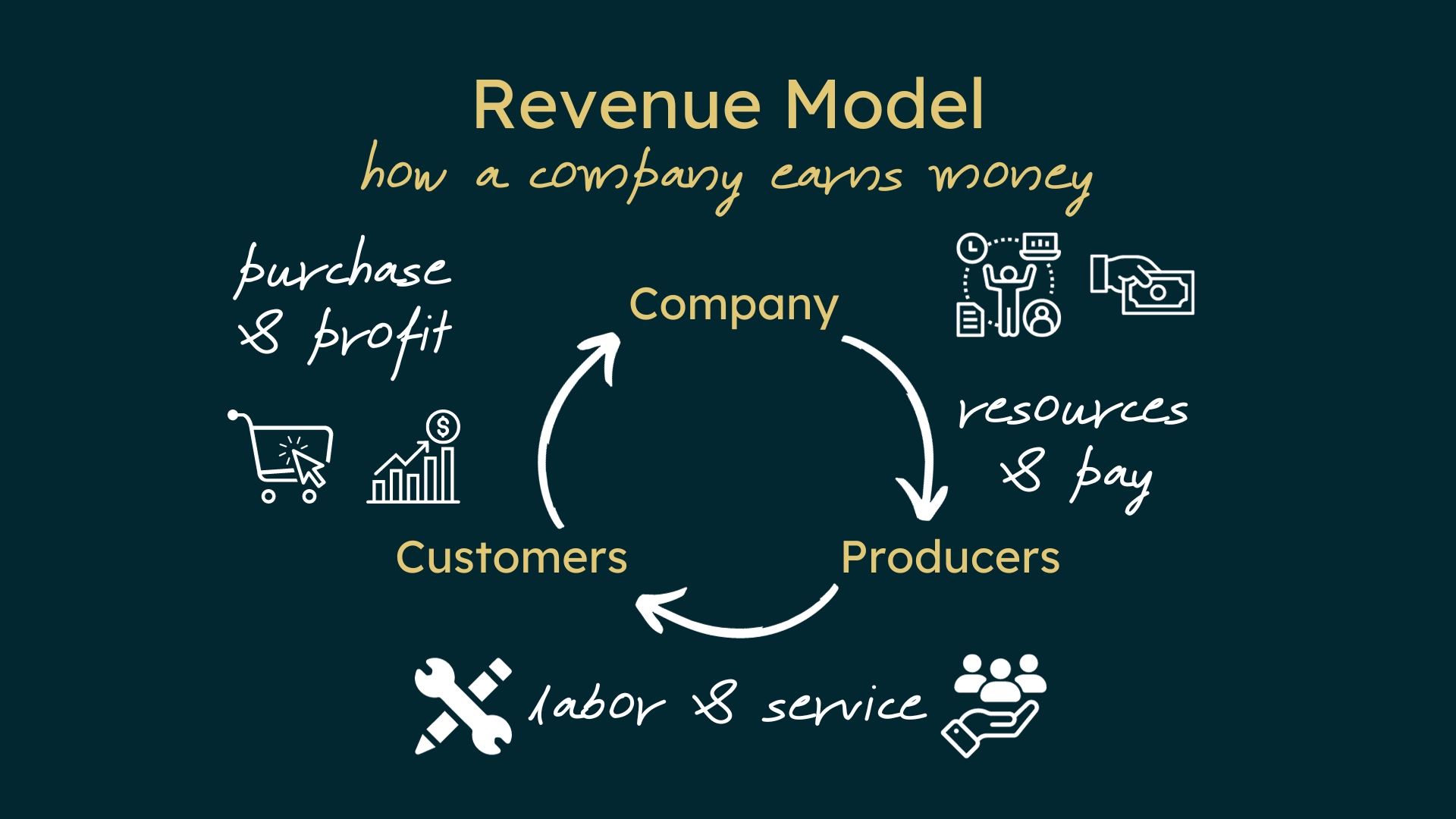
A business model describes how a company creates, delivers, and captures value. The main components are:
- Resources: Something of value the company uses to create a product or service, like physical materials, human labor, data, brands, etc.
- Producers: The people who create the product or service by utilizing resources. This includes employees as well as contractors, vendors, etc.
- Products/Services: The good or service created using resources and labor. This is what provides value to customers.
- Customers: The target audience willing to pay for the product or service. Good business models identify specific target customers.
- Revenue model: How the company will earn money from the product or service. Standard models are selling products, charging fees for services, subscriptions, etc.
Let’s say we own a business that sells customers cups of tea as a product/service. Resources would include tea leaves, spices, and cups. The producers are the tea farmers and makers. Revenue comes from direct tea sales.
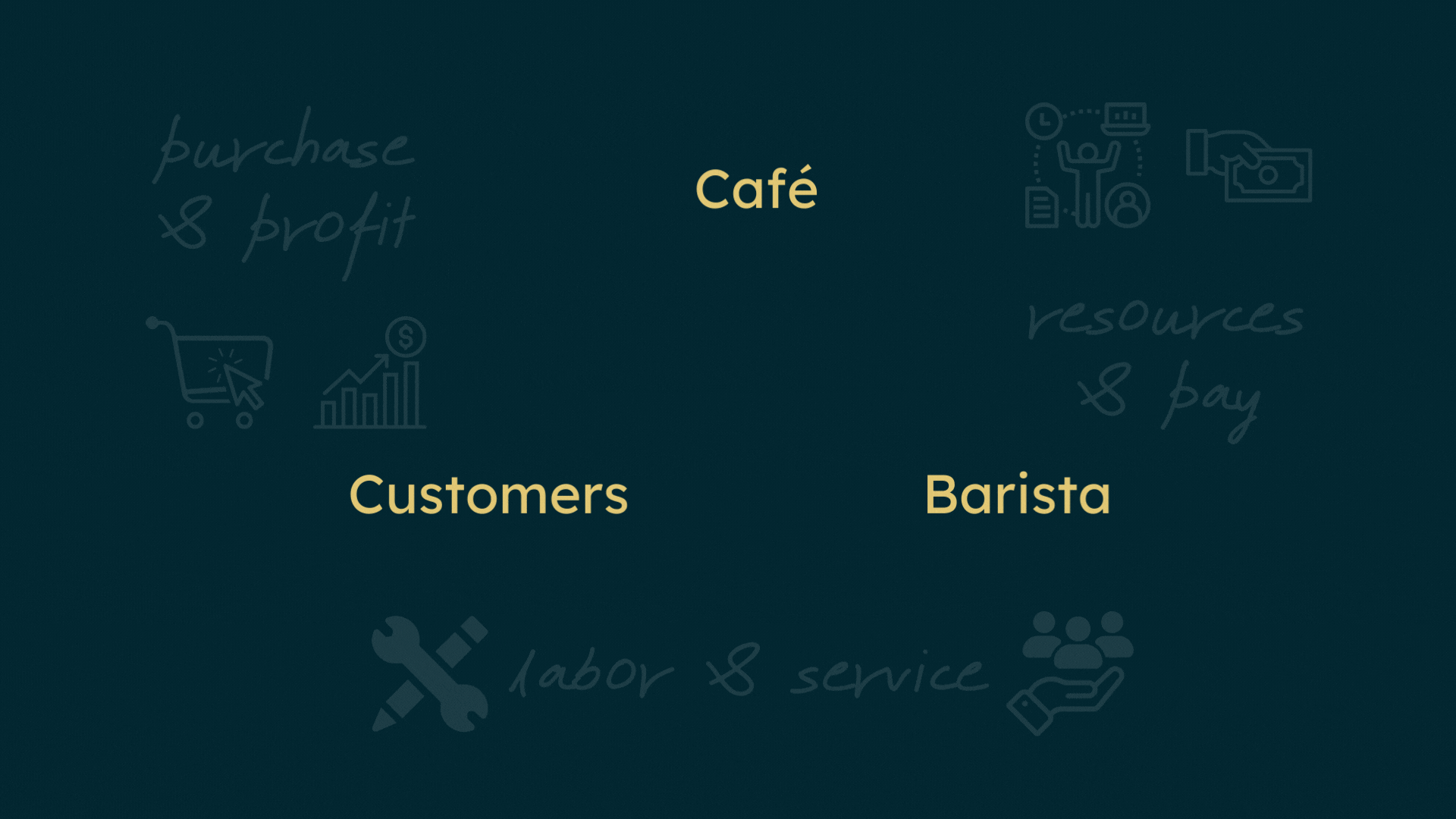
A good business model sustainably aligns the company's, producers, and customers' interests:
- The resources are worth less than the revenue per cup. This covers the company’s costs and risks generating profit.
- For producers, the compensation they receive is worth more than just having access to make and sell tea on their own. They benefit from the company taking the risks and costs to build the brand and attract customers.
- For customers, the tea is worth more than the money they pay because of the taste, convenience, and service.
The company, customers, and employees get fair value in a solid business model. This balanced exchange creates sustainability between the human parties involved in a business model.
The Academic Publishing Model is Extractive
Let’s say we’re a traditional academic publisher. The product is research articles produced by academics (without compensation). The service is research distribution to platforms where the customers (also the producers) pay to access or (in a cost-based open-access model) pay for the public to access.
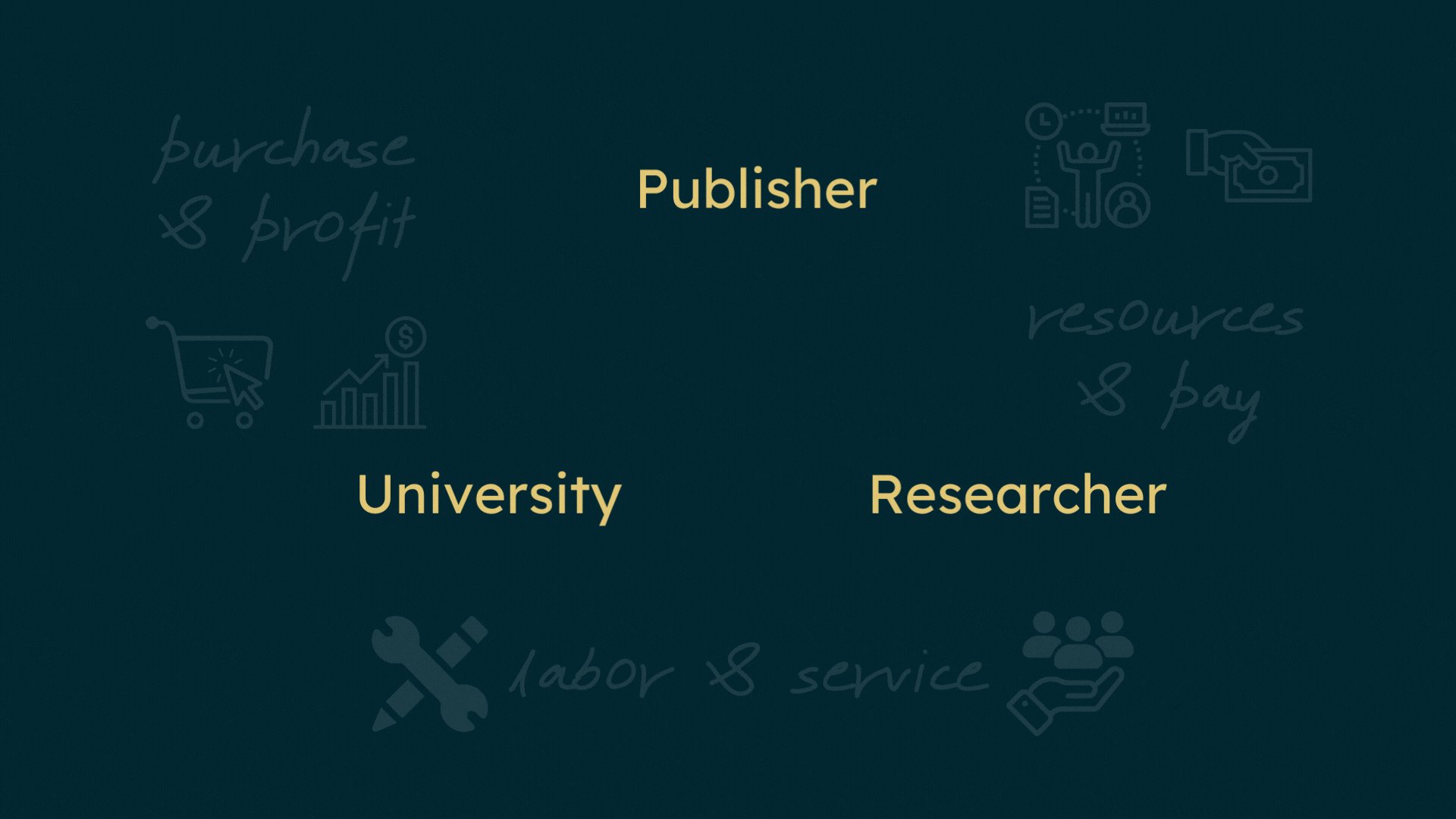
What do you think? Is this representation of the academic publishing model fair and accurate?
The Academic Publishing Model:
- Here, the university hires the researcher who (in addition to teaching and service responsibilities) applies for publicly-funded grants.
- The researcher uses these resources to design and conduct the research. Then, without compensation from the publishers, researchers write and review research articles.
- The publisher may pay its editors and employees for curating and hosting the work but otherwise profit from privatizing publicly funded research through enormous surcharges to the university to grant its researchers access to published works.
As a result, research articles cost nothing to publishers but generate high subscription revenues. For academics, the compensation is not proportional to the value they create through research and review. For universities and scholars, access to research is overpriced compared to publishers’ production costs. This is why academic publishing is an extractive business model.
In academic publishing, the revenue model extracts its profit from the producers it serves.
This would be like a tea business that relies on unpaid tea farmers to grow and harvest all the tea leaves, then charges the farmers ridiculous prices to buy back the tea they produced to drink it.
Except here, the resources are worth the advancement of science and are publicly funded but privately owned. While journal employees may receive compensation for selling library subscriptions and managing the distribution platform, the primary producers of the research are not compensated for their labor. Instead, they are coerced to be customers who benefit by being permitted to continue producing.
You might wonder, if this academic publishing system needs to be fixed, why do people participate?
This is the question we'll be exploring next week. I'll see you there!
Side Note
Interestingly, most researchers (in a Twitter poll) believed unpaid labor toward publishing research is justifiable given their university's salary and service requirements.
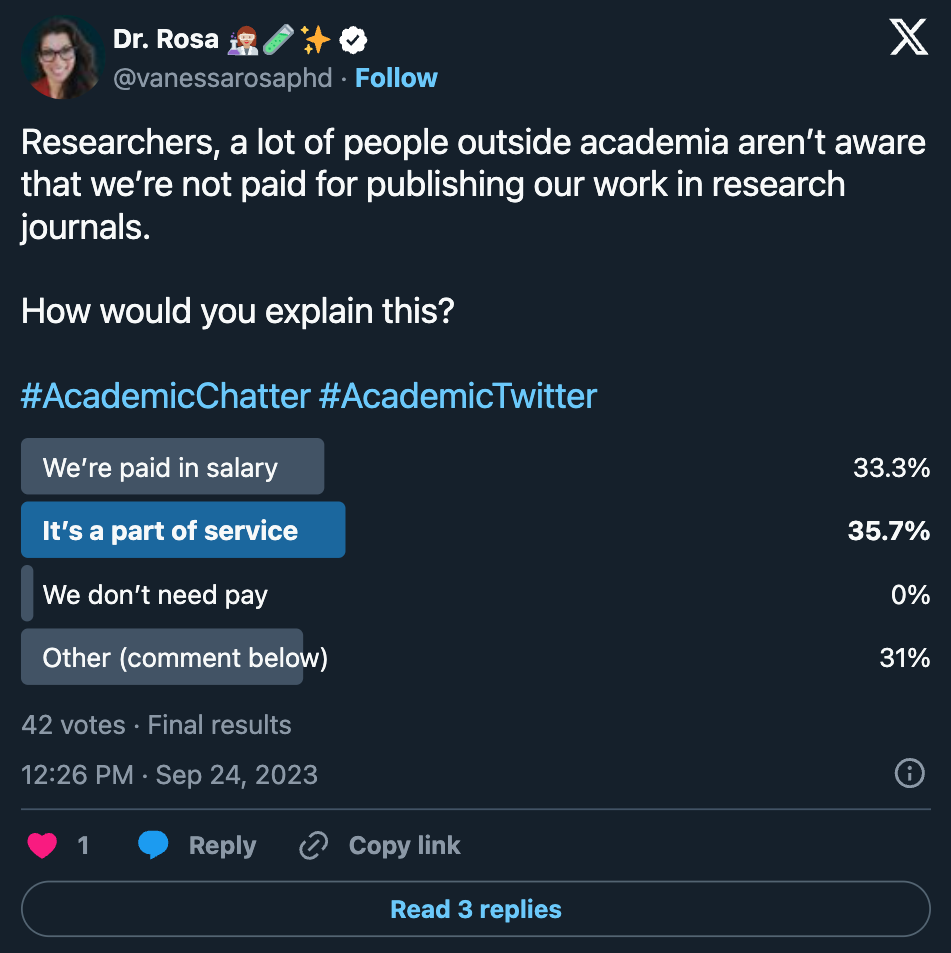
I understand that researchers feel their unpaid labor in the current publishing system is justified by their salaries or service to universities. However, there are a few issues to consider:
- University library subscription fees are unsustainably high and divert funds from research and education. There are more efficient uses of limited university budgets.
- Paywalls on publicly funded research are unethical and hinder scientific progress. Taxpayers should not have to pay twice to access research they already supported.
- Publishers generate huge profits, but little revenue goes back to supporting research. Researchers' free labor increases publisher profits but not their institutions.
- LOW-COST Open access models can disseminate research more widely by eliminating publisher profit margins. This increases impact and aligns with academic missions.
- Research labor should be compensated somewhat by publishers or funded directly through grants rather than relied on as voluntary service. This could help sustain future research.
While I understand researchers' perspectives, the evidence suggests the current system is ultimately exploitative, inefficient, and inhibits scientific progress. Researchers should be compensated fairly for their work, and findings should be shared as widely as possible. Collective action is needed to reform publishing for the public good.
—
Let's continue the discussion in the comments, and if you found this content helpful, consider subscribing or sharing.
Thank you for supporting efforts to advance science education reform and this community!
Resources & References
- Larivière, V., Haustein, S., & Mongeon, P. (2015). The Oligopoly of Academic Publishers in the Digital Era. PLOS ONE, 10(6), e0127502. https://doi.org/10.1371/journal.pone.0127502
- Buranyi, S. (2017, June 27). Is the staggeringly profitable business of scientific publishing bad for science? The Guardian. https://www.theguardian.com/science/2017/jun/27/profitable-business-scientific-publishing-bad-for-science
- Lawson, S. (2017). Journal subscription expenditure in the UK 2015-16 [dataset]. figshare. https://doi.org/10.6084/m9.figshare.4542433.v2
—
- Grossmann, A., & Brembs, B. (2021). Current market rates for scholarly publishing services (10:20). F1000Research. https://doi.org/10.12688/f1000research.27468.2
- Peric, M., Durkin, J., & Vitezic, V. (2017). The Constructs of a Business Model Redefined: A Half-Century Journey. SAGE Open, 7(3), 2158244017733516. https://doi.org/10.1177/2158244017733516
- The National Academies (US) Committee on Electronic Scientific, T. (2004a). Publication Business Models and Revenue. In Electronic Scientific, Technical, and Medical Journal Publishing and Its Implications: Report of a Symposium. National Academies Press (US). https://www.ncbi.nlm.nih.gov/books/NBK215820/
- The National Academies (US) Committee on Electronic Scientific, T. (2004b). PUBLICATION BUSINESS MODELS AND REVENUE. In Electronic Scientific, Technical, and Medical Journal Publishing and Its Implications: Proceedings of a Symposium. National Academies Press (US). https://www.ncbi.nlm.nih.gov/books/NBK215726/






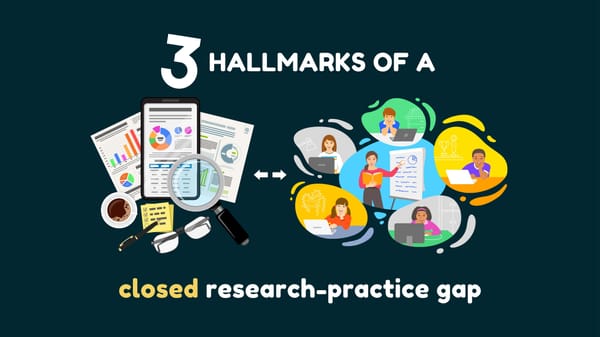
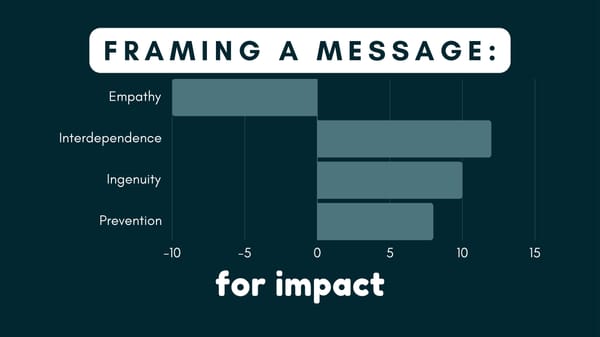
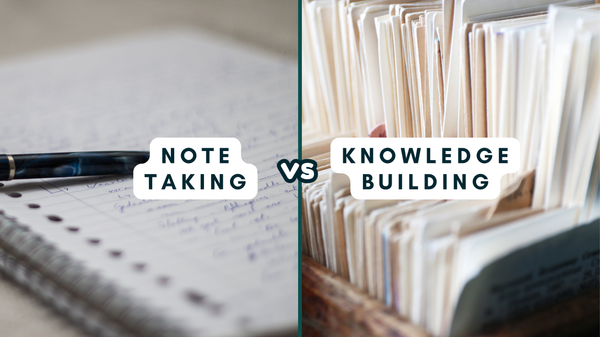
Member discussion